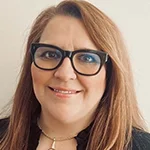 Aerial Ellis and Rick Gould co-authored this article. |
Efforts to bolster diversity throughout the PR industry have begun to accelerate.
In February, the Public Relations and Communications Association — Europe’s equivalent to the Public Relations Society of America — launched its Diversity and Inclusion Guidelines.
The guidelines were developed in response to the PRCA’s commitment to improve diversity within the UK industry, after its 2016 PR Census showed that that the industry is still 91 percent white and 83 percent British.
Agencies are stepping up to the plate as well. London-based Dynamo PR, for example, recently debuted what it calls the PR industry’s first “blind recruitment scheme,” deleting name, education and gender requirements from job applications in a bid to end bias and boost diversity, according to PR Week.
These types of programs must proliferate. The future of the PR profession depends on it. Just take a look at U.S. population projections, per Pew Research Center, showing profound changes in the country’s demographics.
The time for chatter regarding diversity is past, and companies that continue to debate diversity may ultimately find themselves playing catch up.
The Ketchum-Fast Company survey of 500 creative professionals released last summer uncovered an important dichotomy: Respondents believe diversity of thought is valued by their organization (72 percent), yet an overwhelming majority think their organization still needs to do more to encourage diversity of ideas (85 percent).
In order to truly build a more diverse industry, PR firm owners and C-level executives must get out of their comfort zone, which tends to hover near Caucasians with degrees in PR, marketing or communications.
Rather, PR managers and C-level executives have to create their own bridges to encourage blacks, Latinos, and Asians to join the industry; and not just people possessing PR and media savvy but folks who are adroit at videographer, digital analytics, paid media and other skill sets that are becoming core to PR services.
Diversity, of course, is good for business, and helps to create new revenue opportunities that might not otherwise be available.
However, in order to create those opportunities, PR agencies must commit to providing the resources to ensure diversity is baked into the firm’s business operation, from hiring to retention to promotion.
With that in mind, here are three ways PR firm owners and C-level execs can make diversity part of the company’s overall business strategy. Stick-to-itiveness is key.
Budget for training programs
PR pros rarely receive the education needed to navigate the issues related to diversity and inclusion. PR firm owners must budget for training, whether in-house or outsourcing. Before starting any diversity training initiative PR firm owners and C-level execs must decide how they are going to measure the program(s). The goal of these programs is so agencies learn the cultural nuances of audiences and employees who come from nontraditional backgrounds and bring a different frame of reference to the table. PR firms have made adequate investments in time and money so that all their employees understand the historical, theoretical and societal issues related to diversity and inclusion. Resources are available via the PRSA, Institute of Public Relations, PR Council and The Plank Center for Public Relations, among others.
Recruit job candidates with a multicultural mindset
As demand for more diverse firms grows among clients and prospects, firm owners must create an inclusive work environment that attracts, develops and retains talent from diverse backgrounds. It’s crucial that PR firms and corporate communications departments reflect the audiences and communities they serve. To ensure a more diverse pipeline of talent, agency owners should connect with historically black colleges and universities as well as schools with emerging-majority populations. Firms can align with these institutions via sponsorships and/or participation in student-focused events, for example. Diversity and inclusion is much more effective when PR firm owners recognize the value of multicultural employees; go beyond stereotypes of race, age and gender; and avoid putting a person in a box based on his or her identity.
Partner with organizations that advocate for diversity
Senior PR execs must actively build partnerships that promote a deeper understanding between the PR industry and diverse publics. In order to tap into the needs of a multicultural consumer base, C-level execs must align with membership organizations that serve specific cultural groups and advocate for diversity. These groups include chambers of commerce, Small Business Development Centers and civic organizations. PR firm owners can help to create networks of colleagues from various backgrounds, scout smaller minority-owned agencies to assist with projects, and ask for referrals among these various groups. Agency leaders also can host client roundtables periodically as a way to cultivate diverse partnerships, build new alliances and share what’s working (and what’s not).
Of course, there are other types of diversity initiatives. Much depends on the firm’s culture and the level of resources allotted. The larger takeaway is that owners must start to put these programs in place and let them evolve. Otherwise, buyers will start to look upon PR firms as antiquated.
***
Aerial Ellis is managing principal of Advisory 83, a communication consultancy specializing in strategic planning and diversity/inclusion. She is the author of “The Original Millennial” and PR professor in the department of communications and journalism at Lipscomb University.
Rick Gould, CPA, J.D., is managing partner of Gould+Partners, a management consulting firm specializing in creative services firms and M&A. He is the author of “Doing It The Right Way: 13 Crucial Steps For A Successful PR Agency Merger or Acquisition,” and “The Ultimate PR Agency Financial Management Handbook: How To Manage By The Numbers For Breakthrough Profitability Of 20% Or Greater” (4th Edition).


 DJE Holdings, parent of Edelman and Zeno, launches RUTH as an independent shop named after Ruth Edelman, mental health advocate, wife and longtime business partner of Dan Edelman.
DJE Holdings, parent of Edelman and Zeno, launches RUTH as an independent shop named after Ruth Edelman, mental health advocate, wife and longtime business partner of Dan Edelman. New York City PR firms make up the largest slice of O'Dwyer's 147 firm overall ranking with 33 of 40 in the New York/New Jersey area either calling Manhattan their home or having a presence there.
New York City PR firms make up the largest slice of O'Dwyer's 147 firm overall ranking with 33 of 40 in the New York/New Jersey area either calling Manhattan their home or having a presence there. Subject Matter+Kivvit, which joined forces in May, has rebranded as Avoq, an integrated shop with more than 200 professionals in Washington, New York, Asbury Park (NJ), Miami and Chicago.
Subject Matter+Kivvit, which joined forces in May, has rebranded as Avoq, an integrated shop with more than 200 professionals in Washington, New York, Asbury Park (NJ), Miami and Chicago. While PR pros stationed at in-house comms. teams and those working for agencies share many of the same objectives, they also have markedly different top priorities, according to a recent report.
While PR pros stationed at in-house comms. teams and those working for agencies share many of the same objectives, they also have markedly different top priorities, according to a recent report. Edelman is cutting 240 employees or about four percent of its workforce to cope with the cooling down of the PR sector, according to a memo from CEO Richard Edelman.
Edelman is cutting 240 employees or about four percent of its workforce to cope with the cooling down of the PR sector, according to a memo from CEO Richard Edelman.


 Have a comment? Send it to
Have a comment? Send it to 
No comments have been submitted for this story yet.